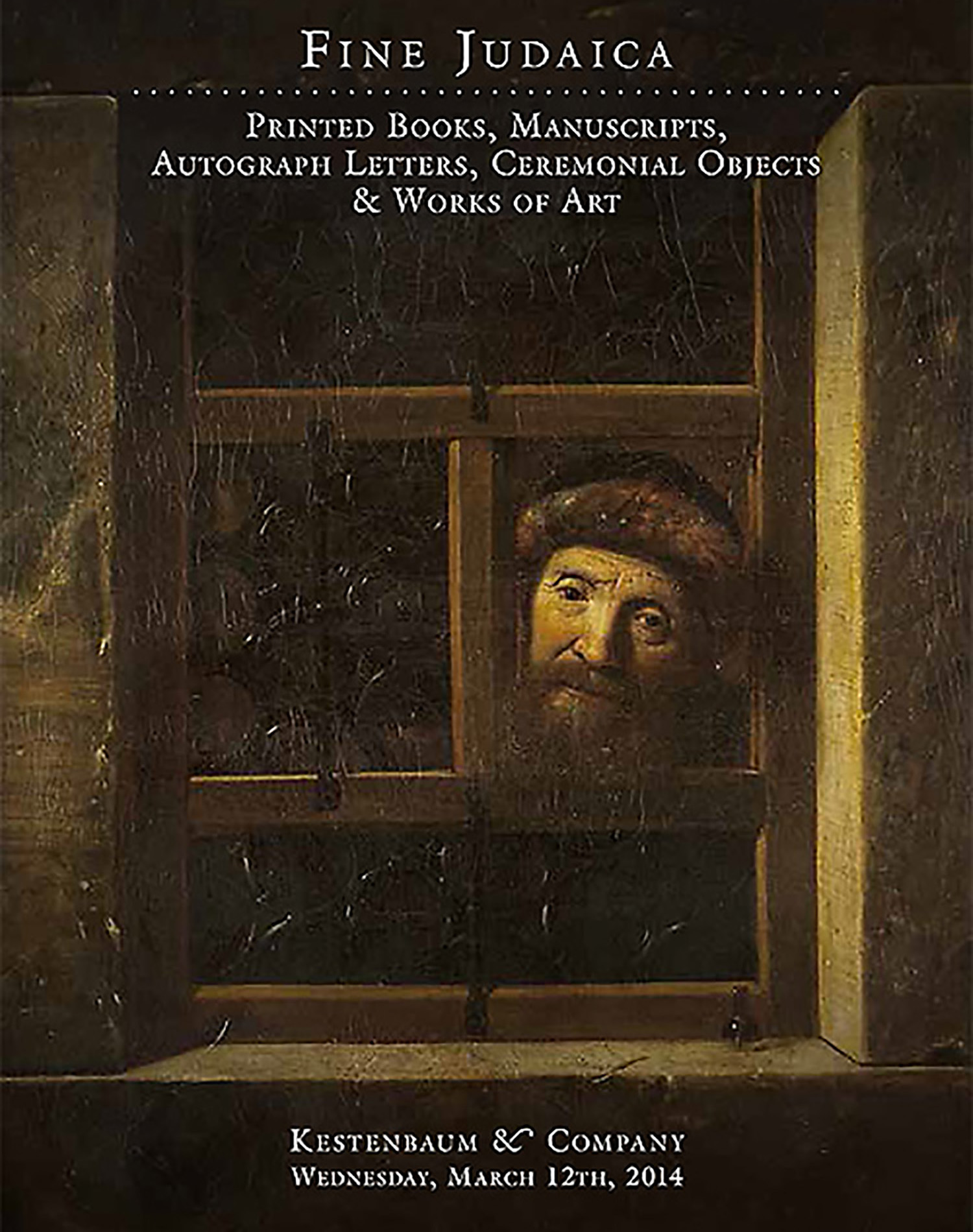Canones et decreta sacrosancti oecumenici et generalis concilii tridentini… Adiectus est Index librorum prohibitorum.

AUCTION 61 |
Wednesday, March 12th,
2014 at 1:00
Fine Judaica: Printed Books, Manuscripts, Autograph Letters, Graphic Art and Ceremonial Objects
Lot 225
(TALMUD).
Canones et decreta sacrosancti oecumenici et generalis concilii tridentini… Adiectus est Index librorum prohibitorum.
Dillingen: Sebald Mayer 1564
Est: $4,000 - $6,000
Reprint of the first editions of the Canones et Decreta of 1563 and the Index Librorum Prohibitorum as revised by the Council of Trent. One of two editions of the Tridentine Index printed in Germany in the same year as the first edition and the first to be combined with the Canones et decreta. The 1564 index was the basis of all subsequent editions of the Index of Banned Books and the first to contain the ten rules for the control of print by the Catholic Church. This edition was printed in the Catholic city of Dillingen in Bavaria, a major centre of the Counter-Reformation with a university founded in 1549. This edition which bans the Talmud was printed the same year as the Italian edition, the first edition to ban the Talmud.
“The Index librorum prohibitorum - list of books prohibited by the Catholic Church was first issued in Rome in 1559 by the Roman Office of the Inquisition under the direction of Pope Paul IV (known as the Pauline Index), it banned more than 583 authors. The concept of a list of forbidden books had been adopted earlier at the Fifth Lateran Council in 1515. A bull from Pope Leo X (who permitted the printing of the Talmud by Daniel Bomberg) the following year established Church censorship, requiring all books published to be submitted for examination and to receive an imprimatur, applied to some Hebrew books. As the Pauline index was considered unduly harsh, the last Council issued the more refined Tridentine Index in 1564, which with modifications, was the model for all following indexes.
The entry for the Talmud here repeats from the Pauline index: Thalmud Hebraeorum, eius’, glossae, annotationes, interpretationes, expositiones omnes (“The Talmud, glosses, annotations, interpretations, and expositions.”) However, this prohibition is here somewhat modified by the added stipulation: Sitamen prodierient sine nomine Thalmud, & sine iniuris, & calumnijs in religionem Christianam tolerabuntur (“But if they shall be published without the title Talmud, and without calumnies and insults to the Christian religion, they shall be tolerated.”) Heinrich Graetz describes this situation, “Strange, indeed, that the pope should have allowed the thing, and forbidden its name! He was afraid of public opinion, which would have considered the contradiction too great between one pope, who had sought out and burnt the Talmud, and the next, who was allowing it to go untouched.
In total, the Index was issued forty-two times, last appearing in 1948, at that time with 4,000 titles. The Index was suppressed in 1966.”
See M.J. Heller, The Sixteenth-Century Hebrew Book, Vol. 2 (2004) p. 551.
